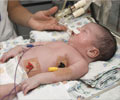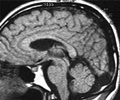
‘devTOXqP tool helps predict developmental toxicants in humans, reducing the need for animal testing.’
Read More..Tweet it Now
The agency's research suggests that devTOXqP is a useful tool for predicting developmental toxicants in humans and reducing the need for animal testing. Read More..
"Through this EPA research, the devTOXqP test demonstrated its potential to detect developmental toxicity across a wide variety of chemicals and pharmaceutical compounds," said Elizabeth Donley, J.D., M.B.A., M.S., chief executive officer of Stemina.
"In addition to helping meet the EPA's goal of reducing the use of animals in testing chemicals, devTOXqP offers the only species-specific, commercially available platform for evaluating a drug or chemical's potential to cause birth defects in the developing human embryo.
We believe this test fits well into global initiatives such as Tox21 and REACH that are seeking to reduce and refine the number of animals used for toxicity testing."
The potential of chemical substances to cause prenatal developmental toxicity is commonly assessed based on observations of fetal malformations and variations in rodent or rabbit studies. Such animal studies are costly, resource-intensive, and the results seen in one species often differ from those seen in other species or from those that might be relevant in humans.
Advertisement
The Stemina devTOXqP test uses human embryonic stem cells (hESCs) or human induced pluripotent stem cells (iPSCs) to predict developmental toxicity based on changes in cellular metabolism following drug or chemical exposure. The iPSC is a reprogrammed cell that is able to recapitulate development into all cell types like hESCs but does not come from an embryo.
Advertisement
These compounds were then tested at eight concentrations in the devTOXqP test to determine the exposure level at which the compound was considered to be toxic. The assay performance reached 82% accuracy with 67% sensitivity and 84% specificity. The sensitivity of the assay improved when more stringent evidence of toxicity was applied to the animal studies.
Statistical analysis of the most potent chemical hits on specific biochemical targets in ToxCast provided insights into the mechanistic underpinnings of the targeted endpoint of the devTOXqP platform.
The researchers found that an imbalance in Ornithine/Cystine was highly predictive of a chemical's potential to disrupt the development of an embryo or fetus, halting the pregnancy or producing birth defects.
"The extensive nature of this research helps to define the applicability domain of the test -- in other words, where does it perform well and where will it need to be paired with other endpoints to generate a better understanding of the potential to cause birth defects", said Jessica Palmer, M.S., associate director of toxicology at Stemina.
"This is just the first step in our longer-term goal of moving away from a reliance on animal tests to predict human response and provides a foundation for building integrated testing systems focused on human cells."
"To address concerns about the effects of drugs and chemicals on our health, we need more human-relevant methods to assess toxicity," said Kristie Sullivan, M.P.H., vice president for research policy at the Physician's Committee for Responsible Medicine.
"We encourage regulatory agencies and companies to consider how the devTOXqP test can improve safety and help reduce animal testing."
Source-Eurekalert











